The Thrilling Renaissance of Notre Dame
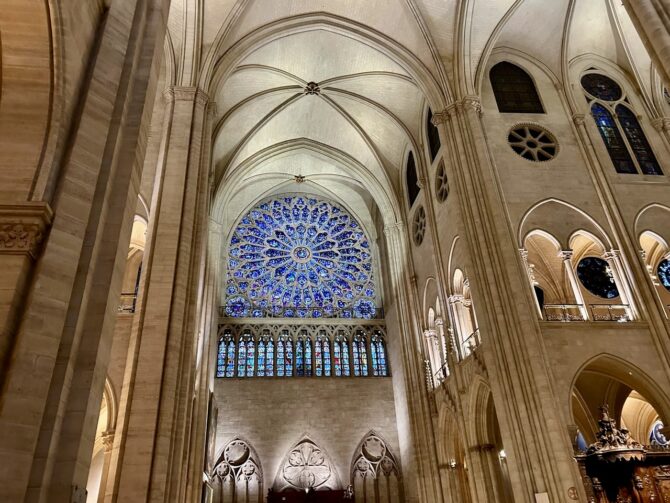

- SUBSCRIBE
- ALREADY SUBSCRIBED?
BECOME A BONJOUR PARIS MEMBER
Gain full access to our collection of over 5,000 articles and bring the City of Light into your life. Just 60 USD per year.
Find out why you should become a member here.
Sign in
Fill in your credentials below.
Like so many others, my husband and I had waited for hours and minutes on the official Notre Dame website, hoping to capture free tickets to one of the events of the Octave, the first eight days of the reopening of Notre Dame. After dozens of tries, we were suddenly presented with a 9 am reservation on December 11. The event was a Mass being celebrated in honor of significant donors to the restoration, but we did not know that then. All we knew was that we were going to Notre Dame!
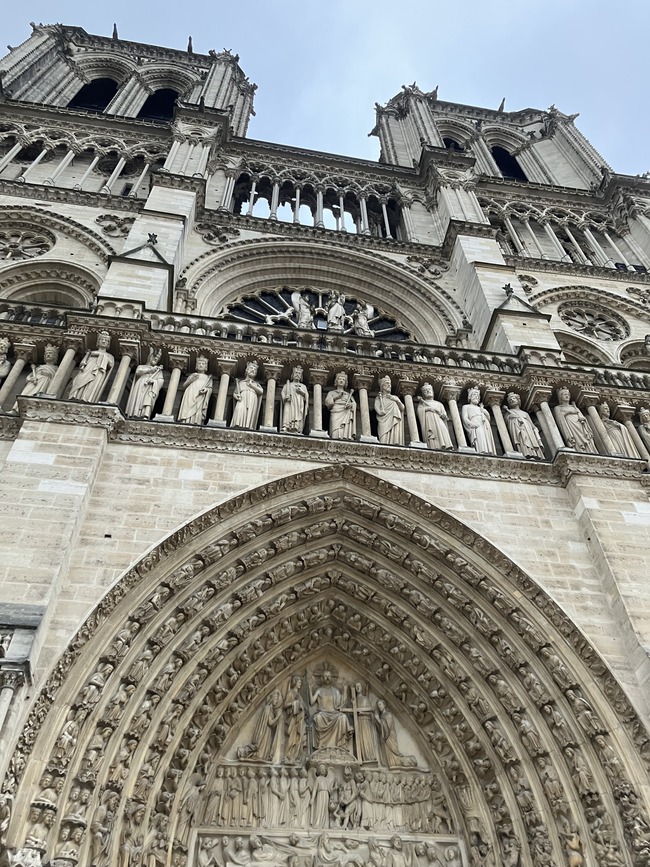
Notre Dame. Photo: Ellen A
The last time we had been inside the splendid cathedral was just a few days before the fire that torched Notre Dame’s roof, collapsed its vaults, and toppled its iconic spire in April of 2019. On that last visit, Notre Dame had seemed as staid and solid as ever, dim and ancient, whispering French history and glory, its dusty grey stone impervious to time. The fire and destruction, along with the unimaginable but very possible collapse of Notre Dame, was a shock to the heart for people around the world, for whom it was a spiritual and cultural nexus.
Now, more than five years after the fire, through breathtaking miracles of labor and love, Notre Dame has been reborn. The spire is rebuilt, and topped once more by a golden rooster, a symbol of France, now reconfigured into a golden phoenix of a rooster, risen from the ashes.
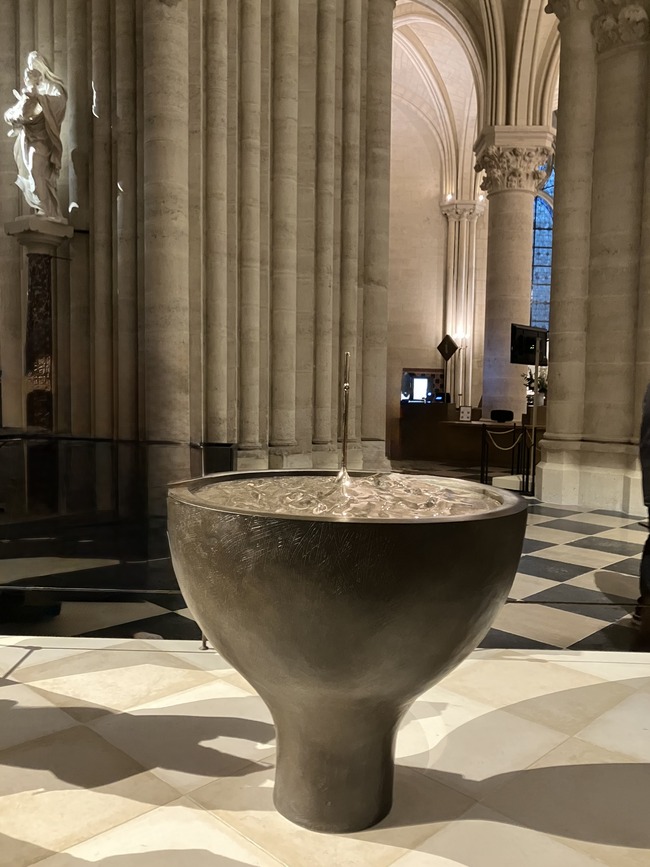
Notre Dame baptismal font. Photo: Ellen A
Upon entering, one encounters first the modern baptismal font, a solid symbol of entry into Christianity and Catholicism after birth or conversion. On the right is a visitors’ desk for information, but you will be forgiven not to notice it, as the glorious nave stretches ahead of you. For what seems like a mile in the distance, tall blond columns of stone, underlit by restored chandeliers, stretch toward the altar. The ceiling’s new vaults arch elegantly to keystones with the image of the Virgin Mary and Christ Child.
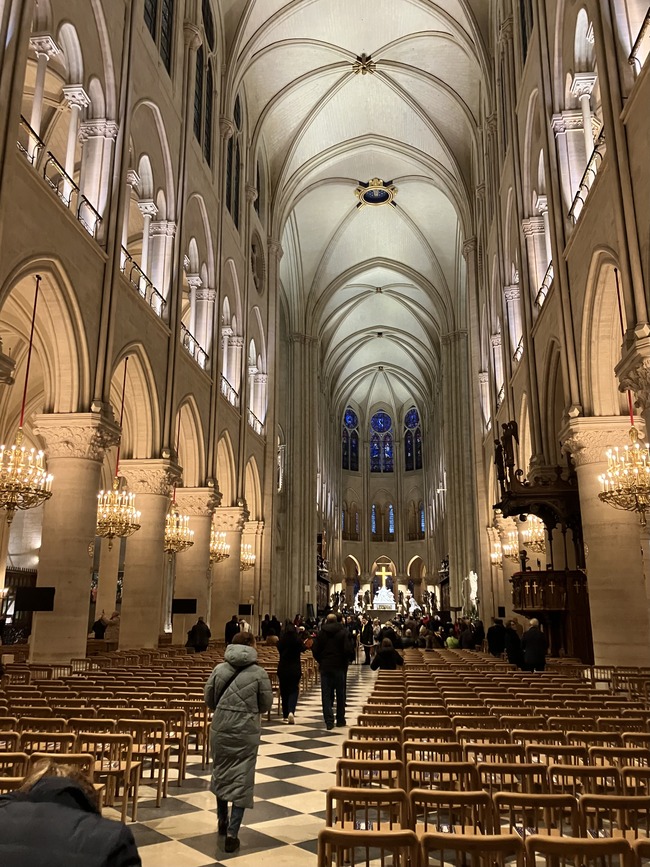
Inside Notre Dame. Photo: Ellen A
As we walked forward into the nave, I have to confess that tears sprang to my eyes. I had been so worried that through its massive restoration Notre Dame might have lost some or all of the sacred aura that centuries of existence and the elements had bestowed on that holy place. Was it possible that the mystery and magic, that we and countless millions of other visitors had experienced, might have disappeared along with the grey soot and debris of the fire? Yet I need not have worried, because the majesty of Notre Dame remained undiminished, alive, and beautiful.
We were not the only ones so moved by this rebirth of the cathedral. A woman seated in our row of chairs fell to her knees and wept openly as the Mass began. In the rows closest to the altar reserved for some of the most generous patrons, we saw people joyfully embrace each other, clearly thrilled and emotionally overcome by the momentous occasion. They had helped to make the miracle possible.
We were delighted by the new dynamic lighting, which alternated from dim and meditative under restored period chandeliers, then brightened during Mass when fresh lights at the balcony level added an impression of sunlight to the whole interior on what was a very dark morning. Because it was such an overcast day, we know we’ll have to return another time to fully enjoy the sparkling stained glass windows.

Notre Dame chandeliers. Photo: Ellen A
The priests’ vestments, with sunburst shards of bright primary colors chosen by Jean-Charles de Castelbajac, were inspired by the cathedral’s stained glass and Keith Haring’s works. Of note, De Castelbajac’s late cousin, Claire de Castelbajac, is a candidate for sainthood. She was an art restorer who worked on the Basilica of St. Francis of Assisi in Italy. Having died of meningitis at the young age of 21, she is said to be responsible for miracles attested to by the cloistered nuns of a French convent and others.
The Mass we attended was extraordinary, with both an adult choir and a heaven-sent children’s choir singing, the great organ thundering. To the right of the altar, on her pedestal, you see the symbol of Notre Dame de Paris, called the Standing Virgin or Virgin of the Pillar. This enigmatic statue of Mary, carved in the 14th century, was fortuitously or miraculously spared from flaming oak beams that collapsed just a few feet in front of her column. The statue was preserved and kept for a time at St Germain l’Auxerrois during the rebuilding of Notre Dame, and was brought back to the cathedral on November 15, 2024 in a special procession and ceremony of prayers and song.
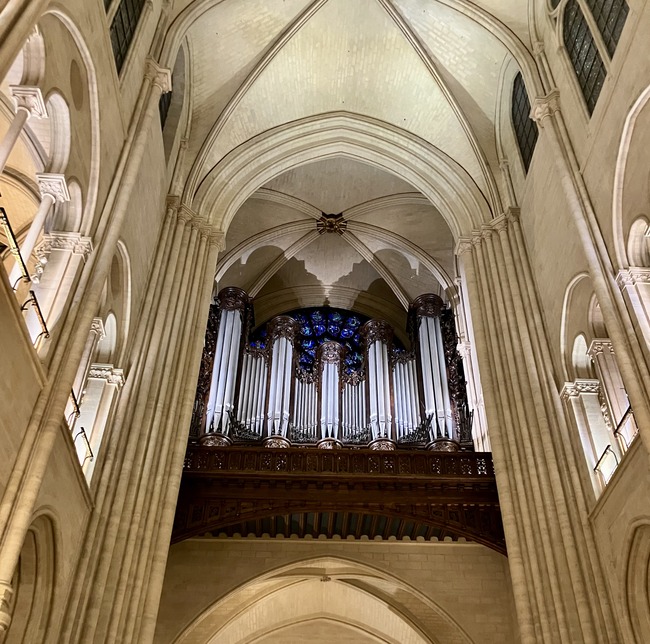
Notre Dame organ. Photo: Ellen A
Just beyond the altar and the choir area, your eye is drawn to the glowing white marble Pièta statue of Mary lamenting the death of her son Jesus. Commissioned by Louis XIV to fulfill a vow made by his father, Louis XIII, to rebuild the high altar, this Pièta by Nicolas Coustou was also spared destruction from the falling stone and fiery beams. Still, it suffered serious damage from hot embers and the melting lead from the roof and scaffolding. Nathalie Pruha, the expert who restored this statue, has deliberately left a streak of melted lead in Jesus’s outstretched hand as witness to the fire, and perhaps as a cautionary tale of life’s fragility.
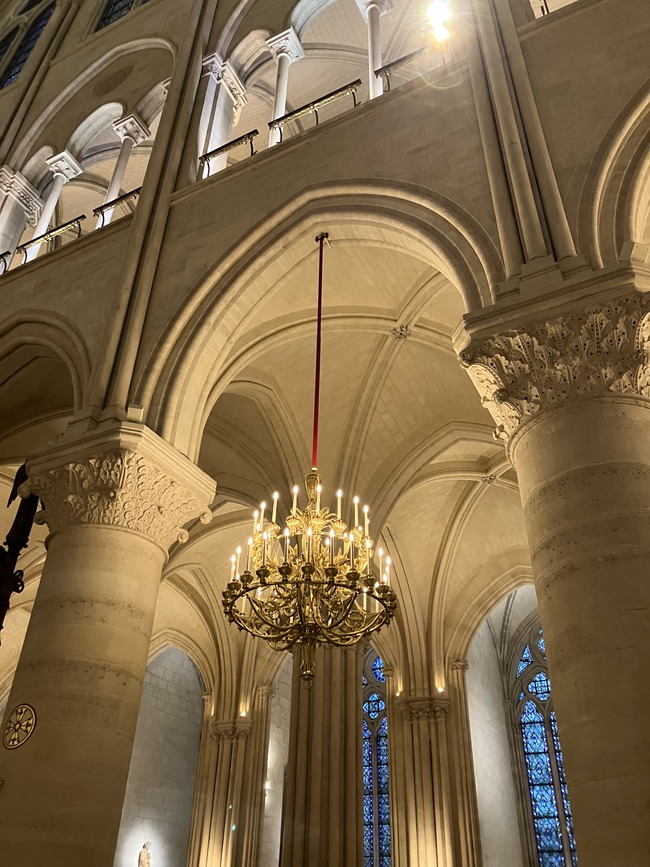
While entry during the first week was quite restricted for special events, Notre Dame opened again to the general public on December 16, with normal visiting hours Monday to Friday from 8 am to 7 pm each day, and extended time on to 10 pm on Thursdays. Saturday and Sunday visits are possible from 8:15 am to 7:30 pm. It’s recommend to book a timed entry ticket on the website to avoid long lines.
A series of special concerts in Notre Dame are planned throughout 2025. Ticketing for these is possible through the official website at https://www.notredamedeparis.fr/en/
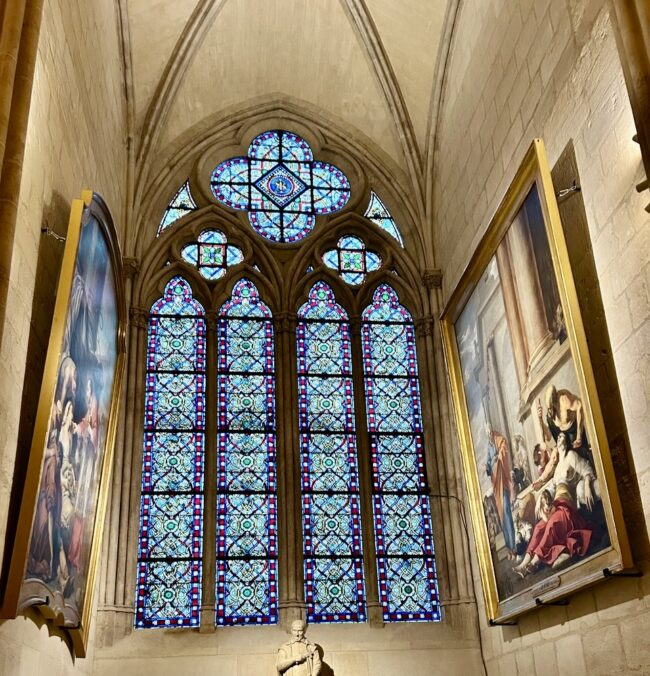
Notre Dame stained glass window. Photo: Ellen A
Lead photo credit : Notre Dame. Photo: Ellen A
More in notre dame, Notre Dame restored
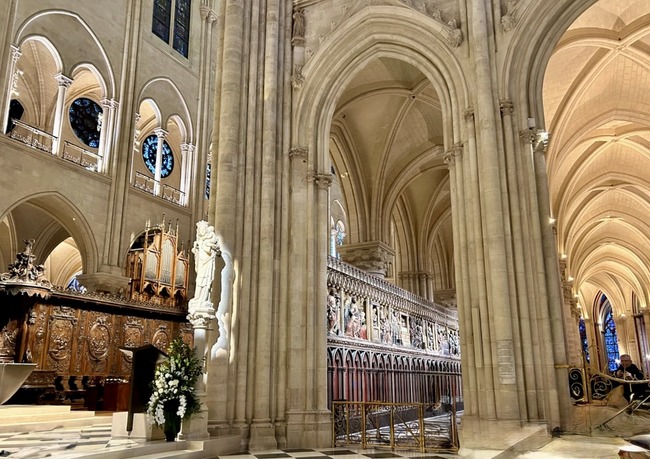
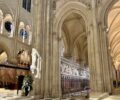
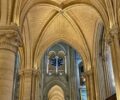
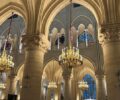



REPLY